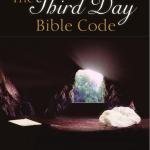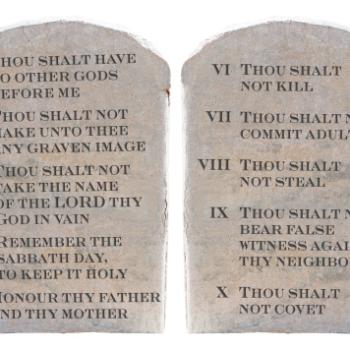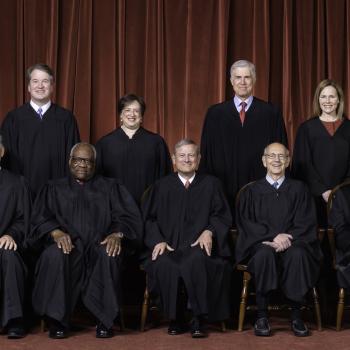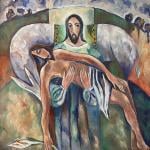Annual Meeting of Society of Biblical Literature
I’ve been a member of the Society of Biblical Literature (SBL) since 1999. During this time, I’ve attended all of its Annual Meetings except one. They are always held the weekend before Thanksgiving. Last weekend, I attended it at the large San Diego Convention Center in downtown San Diego, which is located near the Pacific Ocean.
Every year, this gathering of thousands of Bible scholars takes place in about eight different cities in North America that rotate. If you are really serious about studying the Bible, and you qualify to join this group, this SBL Annual Meeting is the place to be every year. Many of the most famous Bible scholars in the world attend it.
The Society of Biblical Literature joins every year with the American Academy of Religion to hold their annual meetings together. And the SBL is the largest group of Bible scholars in the world. Its membership of about 8,500 includes scholars from all over the world. Many, perhaps most, members are professors with PhDs. I’m not a professor, and I don’t have a PhD. But my theological writings—which now consist of nine published books on biblical studies—qualified me to join SBL. My professor friend Dr. Scot McKnight is the one who convinced me to join SBL back then.
SBL Sections and Their Sessions
SBL’s Annual Meeting lasts for four days and consists of two parts. The main part is that about a thousand SBL sections that meet regularly throughout the year, whether in person or digitally by zoom, usually hold anywhere from one to three sessions at the Annual Meeting that last about 2.5 hours. Most sections were created in the past to focus specifically on something about the Bible. Examples are The Gospel of John Section, The Historical Jesus Section, or the Christian-Jewish Relations Section.
Typically, in these 2.5 hour sessions, four or five members of that section read papers that they have written, and there is opportunity for SBL member attendees to ask questions about what was presented. Or a recent theological book may be presented by its author, and selected members of that section critique the book, with rebuttals by its author and comments from attendees.
Fourth Stage of “Quest for the Historical Jesus”
Usually, sessions are attended by a few dozen SBL members. But when I first joined SBL, since the “Quest for the Historical Jesus” was going strong, The Historical Jesus Section had sessions attended by hundreds of SBL members. Those were exciting events to attend for people who seriously study the Bible in-depth and are very interested in Jesus of Nazareth, the most famous person who has ever lived.
This Quest for the Historical Jesus has been by far the most extensive investigation of a particular human being than any other such study in history. SBL contributes enormously to this Quest, which has now been going on for 250 years. It recently entered its Fourth Stage, which is a reexamination of the historical reliability of the Gospel of John.
Through nearly the entire 250 years of the Quest, most scholars involved in it have agreed that the first three books of the New Testament—the gospels of Matthew, Mark, and Luke—are pretty much historically reliable, though rational skeptics dismiss anything deemed therein as miraculous. But nearly all involved in this Quest have dismissed the Gospel of John as being historically unreliable and therefore not a source for discovering the real Jesus of history. This has been true of even some moderately conservative scholars such as my now deceased friend James D.G. Dunn.
But the Quest has now embarked on a reexamination of this consensus. Many Johannine scholars—specialists who are recognized authorities on the Gospel of John, the three letters of John, and the book of Revelation—have returned to the tradition of the church, that the Gospel of John is just as inspired by God as the other books and letters of the Bible and therefore is a useful source for discovering the real Jesus of history.
My Book, The Restitution
During 28 years of intense study about the identity of Jesus, starting in 1980, I wrote a book entitled The Restitution of Jesus Christ (315,000 words; 570 pp.) and self-published it in 2008. Last year, I changed its title to The Restitution: Biblical Proof Jesus Is NOT God. In this book, I affirm the traditional view that the Gospel of John is a historically reliable source for discovering Jesus of Nazareth. And I indicate that I believed there would come about a change in the academy about this, in which it would return to this tradition, that the Gospel of John presents the real Jesus. So, this new development of a Fourth Stage of the Quest affirms what my book says.
Misinterpreting the Gospel of John
But in my book, I allege that both historical-critical scholars and conservatives, most of whom embrace the church doctrine of the Trinity and therefore that Jesus is God, have misinterpreted the Gospel of John, and that is why historical critics have dismissed it as being historically unreliable. That is, both sides in this dispute have asserted that the Gospel of John presents Jesus as being God. I believe that is quite wrong, and that is the main thrust of my book. For example, leading New Testament scholars who have written about whether or not Jesus is God have cited John 1.1c and 20.28 as the two main texts in the Bible that indicate Jesus is God.
John 1.1c—which is kai ho logos en theos in the Greek text—has been traditionally translated “and the Word was God.” In comparing it with v. 14, which is usually translated, “And the Word became/took flesh,” which obviously refers to Jesus, this traditional translation of 1.1c says Jesus is God. However, there are grammatical issues with John 1.1 that have caused some scholars and Bible translation committees to render 1.1c differently compared to this traditional translation of it. The main problem is that theos has the article in 1.1b whereas theos does not have the article in 1.1c. That is why the New English Bible translates 1.1c, “And what God was, the Word was,” which does not identify Jesus as God. I believe this is a correct.
The other text, John 20.28, is about Thomas seeing the risen Jesus and exclaiming, “My Lord and my God.” This has been almost universally understood—thus by both historical-critical scholars and conservatives such as Trinitarians—as meaning that Thomas called Jesus “God.” But I believe that is an incorrect interpretation as well.
Rather, Thomas spoke in recognition of what Jesus had taught him and Philip days earlier, at the Last Supper. Jesus told his disciples that he was about to depart (John 14.1-3). He then said, “And you know the way to the place where I am going” (v. 4 NRSV). Then we read, “Thomas said to him, ‘Lord, we do not know where you are going. How can we know the way?’ Jesus said to him, ‘I am the way, and the truth, and the life. No one comes to the Father except through me. If you know me, you will know my Father also. From now on you do know him and have seen him.’ Philip said to him, ‘Lord, show us the Father, and we will be satisfied.’ Jesus said to him, ‘Have I been with you all this time, Philip, and you still do not know me? Whoever has seen me has seen the Father'” (vv. 5-9).
The Mutual Indwelling of the Father and the Son
Did Jesus mean he was the Father? No! He then explained what he meant, “Do you not believe that I am in the Father and the Father is in me? … Believe me that I am in the Father and the Father is in me” (John 14.10-11). He meant that God the Father was spiritually indwelling him, and he was spiritually indwelling God the Father as well. Scholars call this spiritual phenomenon “the mutual indwelling.”
The Johannine Jesus had already taught this. He said, “The Father and I are one” (10.30). His interlocutors replied, “You, though only a human being, are making yourself God” (v. 33). Trinitarians are mistaken in thinking that these Jewish opponents of Jesus were correct in saying that. For, Jesus then denied this, saying to them, “I am God’s Son” (v. 36). This is not the same as saying he is God. He then explained what he meant by saying, “The Father is in me and I am in the Father” (v. 38), which is the mutual indwelling. Jesus being God’s Son is meant relationally, not according to Greek metaphysics—that God having a son indicates he must be God just as a man having a son indicates he must be a man. No, that’s incorrect.
SBL’s Book Exhibit at Its Annual Meeting
Back to SBL, the other feature of its Annual Meeting is the Book Exhibit. It is a large hall where many theological book publishers have booths in which they present their books for sale, which usually are discounted up to half off the retail price. Many SBL members meet with people who staff these booths, especially acquisition editors of these publishers to present ideas for book publishing. I was doing that last week, talking to three book publishers about publishing three of my books, two republished and one new book manuscript. I’ll be telling more about it in subsequent blog posts.














